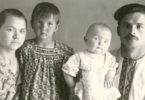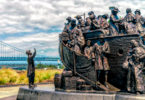Suppose you’ve ever felt that tingle of curiosity about your ancestry; you’re not alone. Researching your Irish roots can uncover family tales, reveal unexpected connections, and give you an entirely new appreciation for your heritage. This guide will walk you through the process of unearthing family records, exploring historical events that may have shaped your ancestors’ journeys, and connecting with the culture that makes Ireland so unique. From civil registration records to local archives, you’ll find plenty of tips and techniques for building a well-rounded family tree. By the end, you’ll be well on your way to piecing together the story of your Irish relatives and feeling that wonderful sense of belonging to something bigger than yourself.
Every researcher’s path is different, but the thrill of finding someone in a parish register or stumbling across a long-forgotten record is universal. Ireland has a rich history of emigration, especially during the mid-1800s, when countless people departed for new opportunities in places such as the United States, Canada, Australia, and beyond. Each of those journeys left behind records waiting for someone like you to come along and bring them back into focus. All you need are the right tools and a little determination, and you can uncover tales that spark pride and wonder in your family’s past.
Beginning your Irish genealogy journey often starts at home. Think about all the details that might already be tucked away in your family’s collective memory—names, dates, or small anecdotes that have been told over the years. Chat with grandparents, cousins, or aunts and uncles who might remember hearing old stories around the dinner table. Ask if anyone has letters, diaries, or documents tucked into a box in the attic. Even a mysterious note on the back of a photograph could hold a clue, like the name of a parish, a year of birth, or a mention of some relative in County Galway. These small pieces can serve as a springboard, helping you know where to look next.
Once you’ve collected the details from your family, online resources are often the next step. A few popular ones include FamilySearch (a free service), Ancestry, and Findmypast. These platforms house extensive databases that can guide you to birth, marriage, and death certificates, as well as church registers, census records, passenger lists, and local histories. When you enter a name into the search box, include as much reliable information as possible—perhaps an approximate birth year or a possible county of origin. If you get a massive number of results, refine your filters. If you find nothing, relax your criteria. Also, remember that Irish names can appear under many variations thanks to different spelling traditions or transcription errors. Trying multiple spellings is often worthwhile, especially if you suspect a name might have been recorded differently over time.
Irish records come in a few main categories. Civil registration is crucial because it includes vital records (births, marriages, deaths). These started in 1864 for the entire population, though non-Catholic marriages began in 1845. Birth certificates typically list parents’ names and might even mention the father’s occupation. Marriage certificates can note occupations, addresses, and witnesses who might be other family members. Death certificates can help verify someone’s final days, giving you another piece of the puzzle. Church records are another cornerstone. In some places, Catholic parish records go back centuries, though surviving records vary by location. Protestant registers exist, too, and each set can include baptisms, marriages, and burials. Church records often list sponsors and witnesses, potentially giving you leads to siblings or cousins.
Local censuses can also be enormously helpful, though many 19th-century Irish census materials were unfortunately destroyed. Still, the censuses from 1901 and 1911 exist in full. These documents can reveal a household’s structure, noting who lived under the same roof, approximate ages, literacy levels, occupations, and whether people spoke Irish or English. A record showing a prominent family in a small cottage in County Mayo paints a vivid picture of the life your ancestors led. In some cases, these census forms were handwritten by a member of the household, which adds a personal touch to your research.
Beyond those core record sets, land surveys can uncover valuable nuggets. Griffith’s Valuation (1847–1864) is one such resource, listing property owners and occupiers across Ireland. If you find someone matching your family name renting farmland near a small village, that may confirm a location and timeframe for your ancestors. The Tithe Applotment Books (1823–1837) are older still, tracking who paid tithes to the church, and they can place families in specific parishes in the early 19th century. These resources help fill in gaps where other records might be missing.
A key tip is to remain flexible about dates, spellings, and even names. Many people had to give approximate ages when asked, mainly if they did not track birthdates formally. Others might have used nicknames or changed their first name upon immigrating to a new country. A woman baptized as “Brigid” might later appear as “Delia” in American documents because the family decided it was a more straightforward name to use daily. It’s also worth noting that official record keepers might have misunderstood thick Irish accents, so the surname “O’Donoghue” could transform into “Donahoe,” “Donahoo,” or something else entirely.
If you hit a roadblock, consider joining online communities or local genealogical societies where others researching Irish ancestors gather to share hints, translations, and moral support. Someone else might have faced the same puzzle and discovered a clever workaround. You can also seek the assistance of professional genealogists, especially if you suspect complicated circumstances like multiple moves, name changes, or missing records. In many cases, a professional specializing in Irish research might have access to lesser-known archives or the language skills needed to interpret older Gaelic documents.
Personal stories bring these records to life. Consider a scenario where someone learns of their great-great-grandfather, who left County Clare in the 1850s for Australia. They find a passenger manifest that lists the man’s name and a group of neighbors traveling together under sponsorship from a local landlord. They learn of an organized program to send struggling tenants overseas by checking local Clare newspapers from that era. In time, they find references to the village where these families originated, leading them to specific parish registers that list baptisms and marriages going back decades. Not only have they located an ancestor’s name, but they’ve also uncovered the motivations behind the move and met others who experienced the same hardship.
If you want to go beyond online records and official documents, consider exploring local archives or libraries in Ireland. Many counties have genealogical centers that maintain copies of parish registers, newspaper archives, and other material that hasn’t been digitized. This can be exciting, as you never know what hidden gems you might stumble upon. Perhaps a small-town museum houses a ledger detailing relief efforts during the Great Famine, with your family’s name on the list of those who received aid. Or maybe a local archive has personal letters or diaries referencing distant relatives. These discoveries not only add depth but can also make your ancestors’ experiences feel remarkably real.
Traveling to Ireland can be a heartwarming adventure in itself. Standing where your relatives once called home, seeing the landscape, and talking to residents who might share insights or stories can transform a simple collection of birth and marriage dates into something meaningful. Even if you can’t journey there right away, many Irish countries now offer virtual tours, online exhibitions, and digitized local histories that help you visualize the atmosphere of the region your family came from.
Once you’ve gathered a healthy amount of research, could you share it with others in your family? You might organize a reunion where you bring old photos, documents, and maps showing where your ancestors lived. Create an online tree and invite relatives to add information. By keeping the conversation going, you can ensure that younger generations also learn about their past. After all, one of the most significant rewards of genealogical work is passing these stories along so that nobody’s name or experiences are lost to time.
Above all, remember that tracing your Irish roots is a marathon, not a sprint. Some records are straightforward to locate, while others require patience and multiple attempts. You may find that your great-great-grandmother’s birth details were recorded in a parish that only recently had its registers digitized. Or you might get stuck for months, only to break through when a distant cousin sends you a scanned newspaper clipping they discovered by accident. Keep an open mind, stay enthusiastic, and enjoy each step.
Researching your Irish heritage is a chance to reconnect with the people who shaped your family’s story and played a part in where you stand today. Each time you confirm a record or link someone to your tree, you’re honoring the memory of those who came before you. May your search lead to enlightening surprises, cherished memories, and a deep sense of connection to the history, culture, and spirit of Ireland.






